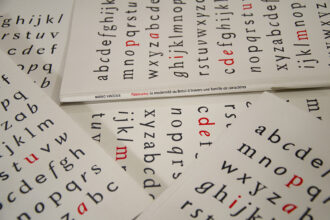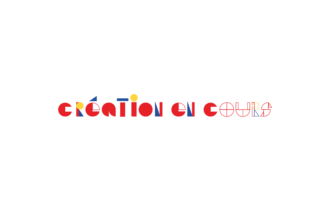Wyville

Wyville is a typeface created for Cercle Magazine n. 5, whose theme is the oceans.
Wyville is an incised display typeface whose inspiration comes from the lettering found on the boxes that contain the photographic negatives documenting the HMS Challenger expedition (1872–1872). Its name pays homage to Scottish natural historian Sir Charles Wyville Thomson, the main scientist in charge of this pioneer expedition. The generous proportions and the open finish of the initial lettering were kept, as well as the low contrast of the letters. However, the letters were reimagined as an incised typeface in order to accentuate the “epic” aspect regarding the Challenger expedition. Besides that, the work on the undulation of the incisions and the oblique finish of the diagonals allowed the exploration of the rhythm obtained when the letters are composed: undulating, sometimes smooth or even abrupt – like the ocean.
Credit: © cercle magazine

Wyville é um tipo criado para a Cercle Magazine n. 5, cujo tema são os oceanos.
Wyville é um tipo inciso para títulos inspirado no letreiramento encontrado nos cofres que contêm os negativos fotográficos que documentam a expedição do HMS Challenger (1872–1876). Seu nome é uma homenagem a Sir Charles Wyville Thomson, naturalista escocês e principal cientista encarregado dessa expedição pioneira. As proporções generosas e o acabamento aberto do letreiramento inicial foram conservados, assim como o baixo contraste das letras. Entretanto, as letras foram reimaginadas enquanto fonte tipográfica incisa, a fim de acentuar o aspecto “épico” relativo à expedição do Challenger. Além disso, o trabalho sobre a ondulação das incisões e a terminação oblíqua das diagonais permitiu a exploração do ritmo obtido quando as letras são compostas: ondulante, às vezes suave ou mesmo abrupto – como o oceano.
Crédito: © cercle magazine
Wyville est un caractère typographique créé pour Cercle Magazine n. 5 sur le thème des océans.
Wyville est un caractère de titrage incisé dont l’inspiration vient du lettrage trouvé dans les coffres qui contenaient les négatifs photographiques documentant l’expédition du HMS Challenger (1872–1876). Son nom est un hommage à Sir Charles Wyville Thomson, naturaliste écossais et principal scientifique en charge de cette expédition pionnière. Les proportions généreuses et la finition ouverte du lettrage initial ont été conservées, ainsi que le bas contraste des lettres. Néanmoins, les lettres ont été réimaginées en tant que police de caractère incise afin d’accentuer son aspect « épique » relatif à l’expédition du Challenger. De plus, le travail sur l’ondulation des incisions et la finition biseautée des diagonales a permis l’exploration du rythme obtenu lorsque les lettres sont composées : ondulantes, parfois souples, ou même abruptes – comme l’océan.
Crédit : © cercle magazine












